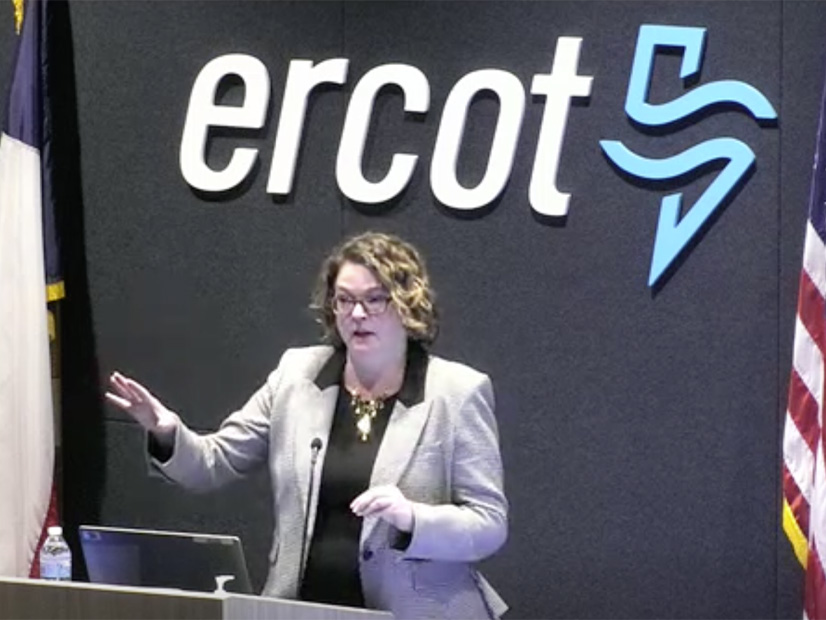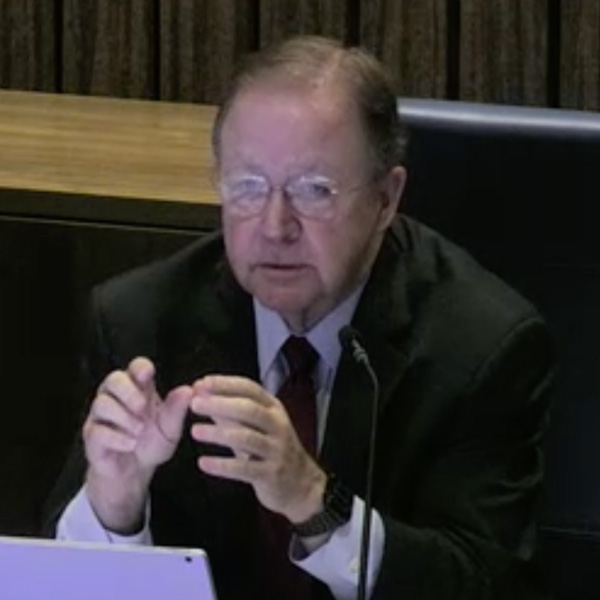Speaking before the ERCOT Board of Directors on Oct. 17, the grid operator’s Independent Market Monitor, Potomac Economics’ Carrie Bivens, defended her organization’s recent report that the grid operator’s newest ancillary service “likely” raised the real-time market’s energy value by at least $8 billion.
Several directors latched on to the $8 billion figure during their meeting before Bivens stood at the podium, saying the figure was “erroneously reported” and “a billion-dollar headline that was inaccurate.”
In the report, the IMM said ERCOT’s recent implementation of ERCOT contingency reserve service (ECRS), its first ancillary service in 20 years, has nearly doubled the amount of required online reserves and resulted in “enormous” increases in market costs and shortage pricing when the market is long.
Procuring and deploying the service has reduced supply and liquidity in the day-ahead market, “significantly” raised demand for ancillary products and resulted in inefficient day-ahead ancillary service (AS) price spikes, Bivens said during a September working group presentation. (See ERCOT IMM Raises Concerns over Newest Ancillary Service.)
“We know that this service has not increased efficiency because of the analysis that we perform,” Bivens said, noting the ECRS business case focused on improving market efficiency. She said the report’s purpose was to show an “order of magnitude” so the board could understand the costs involved.
Bivens said the IMM intends to provide comments to staff’s annual AS methodology report to “tweak” how ECRS and non-spinning reserve is purchased “to bring that into alignment with what we think are more reasonable reliability goals.”
“I hope that we can engage you guys in December to talk more about the ancillary services methodology,” she said.
Former Rep. Bill Flores (R), the board’s vice chair and a proponent of dispatchable thermal generation, debated Bivens over AS products and their value in avoiding load shed, saying their additional costs are worth the alternative.
“When you look at the cost of ancillary services that’s paid for to try to encourage reliability to try to create a reliable grid, the offset to that is that there was a cost of avoided load shed. What is the value of that?” he asked. “Basically, ancillary services are paying for the avoidance of load shed. I think you’d bet that reliability is important and that ought to be the goal of any grid operator.”
“Of course, absolutely,” Bivens responded. She said ancillary services are “very specific capacity products,” not general capacity products to meet a reliability standard.
“They’re very specific to follow the load and to ensure that the frequency is followed or, if a unit trips, to be able to replace those megawatts, but you still have reliability,” she said. “What I’m trying to point out is that they have very specific uses and, as specific uses, can be studied and analyzed to determine how many do you need to meet them.”
“The cost they’re offsetting is avoided load shed,” Flores said. “We need to look at the value of that. Somewhere, that’s got to be baked into this analysis … because load shed has a cost to consumers, the economy, to people, to physical health and so forth.”
“We should absolutely procure enough to have a reliable grid,” Bivens said. “We should have the right services to meet the specific attributes that the grid needs. But we should not buy more than that. More megawatts is just more cost. It’s not actually buying you any additional reliability. I think we would have been just as reliable this summer without these excess ECRS megawatts.”
The Public Utility Commission has a request for proposals out for the next four-year contract for a market monitor. Responses are due Oct. 30, with the new contract beginning Jan. 1. (See ERCOT Monitor’s Name Change Raises Legislative Concerns.)
1-Hour SOC for ESRs
The board approved a nodal protocol revision request (NPRR1186) that sets the minimum state of charge (SOC) for energy storage resources participating in two of ERCOT’s ancillary services (ECRS and non-spinning reserve), a move one energy storage developer said will have a “chilling effect” on attracting longer-duration batteries.
As modified by ERCOT and endorsed by the Technical Advisory Committee last month, the protocol change will reduce the requirement for storage resources to maintain a two-hour SOC down to one hour. The NPRR was remanded back to TAC by the board during its August meeting for further discussion and to address a “stranded energy” issue during scarcity conditions. (See ERCOT Technical Advisory Committee Briefs: Sept. 26, 2023.)
Storage developer Eolian, speaking for its segment, has opposed the measure throughout the stakeholder process. It says ESRs’ fast-ramping capability can be crucial during scarcity events and give other resources additional time to come online.
Ironically, ESRs produced a record 2.17 GW on Sept. 6, when ERCOT, faced with constrained renewable energy in South Texas, declared a Level 2 energy emergency alert after voltage dropped. (See ERCOT Voltage Drop Leads to EEA Level 2.)
ERCOT began the summer with more than 3 GW of energy storage and expects that total to hit 9.5 GW next year.
During a discussion before the board’s Reliability and Markets (R&M) Committee on Oct. 16, the ISO said it needs to know that a resource with an ancillary service obligation is available during the times it has bid into being available. The R&M unanimously approved NPRR1186.
“We came up with a better product,” committee chair Bob Flexon told the board. “We really did air it all out yesterday. I feel that all parties had ample time to express their thoughts and considerations.”
The board will direct staff to file priority NPRRs to handle compliance issues and financial penalties for nonperformance. The changes may be sent directly to TAC.
The board also approved two other revision changes:
-
- NPRR1184, which clarifies ERCOT’s management of the interest it receives and is owed to counterparties for posted cash collateral and requires staff to credit counterparty collateral accounts for interest every month. The NPRR also requires ERCOT to report the interest calculation.
- A system change request (SCR824) that increases the attachment file size and quantities allowed within the resource integration and ongoing operations system.
F&A Proposes Revised Budget
Flores, who chairs the board’s Finance and Audit Committee, said a review of ERCOT’s financial performance indicates the organization’s improved financials need to be considered when the PUC takes up the grid operator’s 2024-25 budget next month.
ERCOT has proposed a budget, approved by the board in June, that increases its system administration fee 27.9%, from $0.555/MWh to $0.710/MWh. The budget drew several questions from the PUC during an Oct. 13 public hearing. The commission will take up the budget a final time during its Nov. 2 open meeting. (See ERCOT Defends Admin Fee Increase Before PUC.)
Flores said interest income is expected to be about $27 million higher than initial forecasts and that this summer’s administration fee revenues were up about $6 million because of the additional load. Expenses that are down $4 million have given ERCOT about $36 million more available for 2025 than originally projected, he said.
“Those additional resources should be made available to reduce the impact of the cost of the system admin fee on the consumers of the state,” Flores said. “If you were to prepare the budget today and present that to the PUC, you could possibly come up with a system admin fee somewhere less than the 71 cents that we originally proposed.”
The F&A Committee, following Flores’ lead, has asked ERCOT staff to submit a revised rate calculation to the commission.
PUC Holds Weatherization Workshop
ERCOT staff and stakeholders updated the PUC on Friday during a public hearing reviewing winter weather preparedness, grid reliability and resiliency, and industry compliance with weatherization standards ahead of the 2023-24 winter season.
The grid operator said weatherization inspections are ahead of schedule in meeting PUC rules. Power plants are required to winterize their equipment against extreme cold and identify critical components susceptible to cold weather.
ERCOT also briefed the commission on its new firm fuel supply service, which ensures generators have backup fuel available on site, and demand response programs in the ERCOT region.
“Today’s work session was a great opportunity for us and the public to review the many steps Texas has taken to prepare for extreme cold weather,” Commissioner Will McAdams said.
The grid operator does not expect emergency conditions this winter but has issued an RFP for 3 GW of additional capacity to increase its operating reserves. Resources have until Nov. 6 to respond to the RFP; awards for three-month contracts (December-February) will be announced Nov. 23. (See ERCOT Searching for 3 GW of Winter Capacity.)



